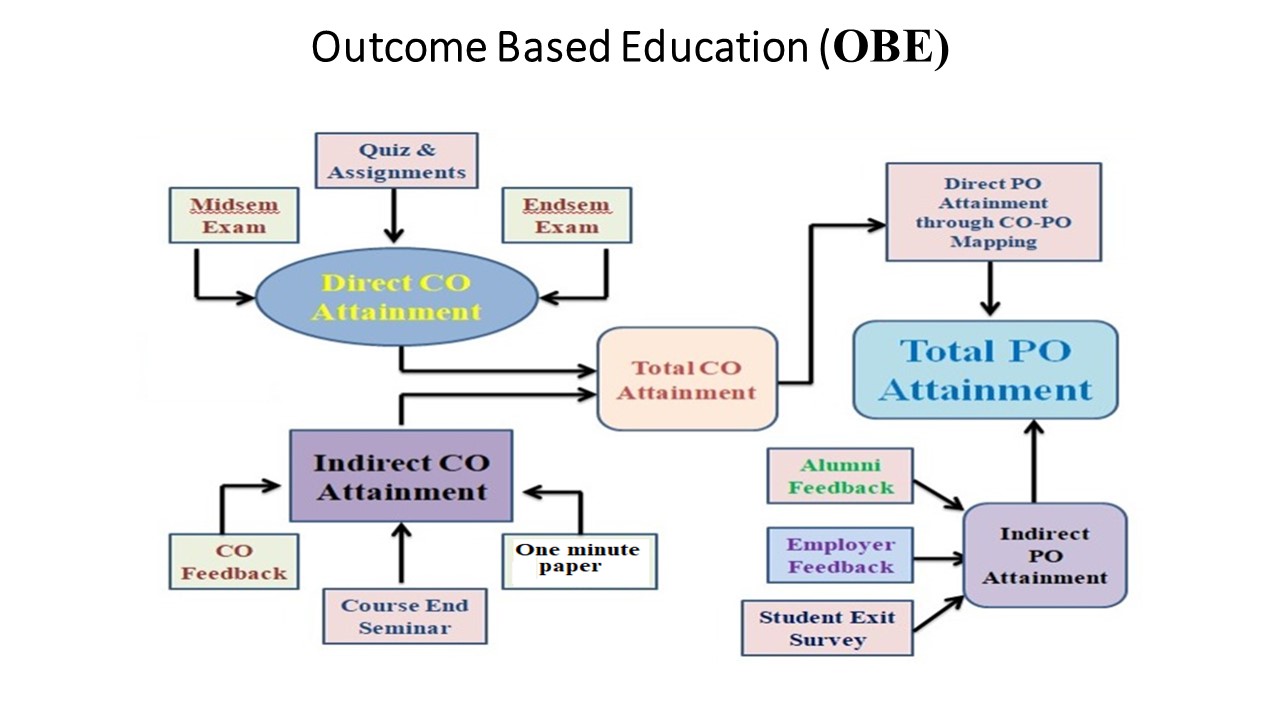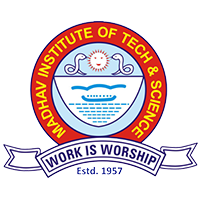Programme Educational Objectives (PEOs) |
|
PEO-I |
Graduate of the program will be able to collaborate as team to design and develop real world applications for the industry and society. |
PEO-II |
Graduates of the program will be able to develop attitude of lifelong learning and become adaptable to rapidly changing industrial and social environment. |
PEO-III |
Graduates of the programme will be able to become a good leader and successful entrepreneur. |
Program Outcomes (POs) |
|
| PO1 | Engineering Knowledge: Apply the knowledge of mathematics, science, engineering fundamentals, and an engineering specialization to the solution of complex engineering problems. |
| PO2 | Problem Analysis: Identify, formulate, review research literature, and analyze complex engineering problems reaching substantiated conclusions using the first principles of mathematics, natural sciences, and engineering sciences. |
| PO3 | Design/Development of Solutions: Design solutions for complex engineering problems and design system components or processes that meet the specified needs with appropriate consideration for public health and safety, and cultural, societal, and environmental considerations |
| PO4 | Conduct Investigations of Complex Problems: Use research-based knowledge and research methods including design of experiments, analysis and interpretation of data, and synthesis of the information to provide valid conclusions. |
| PO5 | Modern Tool Usage: Create, select, and apply appropriate techniques, resources, and modern engineering and IT tools including prediction and modeling to complex engineering activities with an understanding of the limitations. |
| PO6 | The Engineer and Society: Apply reasoning informed by the contextual knowledge to assess societal, health, safety, legal and cultural issues and the consequent responsibilities relevant to the professional engineering practice. |
| PO7 | Environment and Sustainability: Understand the impact of the professional engineering solutions in societal and environmental contexts, and demonstrate the knowledge of, and need for sustainable development. |
| PO8 | Ethics: Apply ethical principles and commit to professional ethics and responsibilities and norms of the engineering practice. |
| PO9 | Individual and Team work: Function effectively as an individual, and as a member or leader in diverse teams, and in multidisciplinary settings. |
| PO10 | Communication: Communicate effectively on complex engineering activities with the engineering community and with society at large, such as being able to comprehend and write effective reports and design documentation, make effective presentations, and give and receive clear instructions. |
| PO11 | Project management and Finance: Demonstrate knowledge and understanding of the engineering and management principles and apply these to one's own work, as a member and leader in a team, to manage projects and in multidisciplinary environments. |
| PO12 | Life-long Learning: Recognize the need for, and have the preparation and ability to engage in independent and life-long learning in the broadest context of technological change. |
Program Specific Outcomes (PSO) |
|
| PSO1 | Graduate will be able to exhibit analytical & logical skills and apply knowledge of Computer Science to design, develop, test and maintenance of software solutions. |
| PSO2 | Graduate will be able to identify, formulate and resolve real life/social problems by using current computer technology. |
Outcome-based education (OBE)
Outcomes-based education (OBE) is a process that involves the restructuring of curriculum, assessment, and reporting practices in education to reflect the achievement of high-order learning and mastery rather than the accumulation of course credits. 
Step 1: Institution’s Vision & Mission
Institutions need to decide on a short-term goal as well as a long-term goal in terms of students' learning outcomes, personal growth, skill development, and the institution’s overall performance. so that the higher aim of the entire institution could be achieved within a specified time. Department can formulate its vision and mission in aligned with Institute’s Vision and Mission
Institutions can follow the given steps to define their vision & mission: department-wise.
- Brainstorming sessions with experts & experienced faculty of various departments
- Speaking to industry professionals and alumni batches
- Analyzing the opinions and deciding on a solid plan of action
Step 2: Establishing The Program Educational Objectives & Program Outcomes
Program Educational Objectives (PEOs): Program educational objectives (PEOs) specify the expected outcomes of students once they graduate, mostly the way they conduct their behavior & ethics and excel in their careers.
Following an approach to establishing the PEOs for institutions.
- Institutions need to consider the vision & mission statements and prepare a plan of action to achieve PEOs.
- Experienced faculty members and the Head of the Department (HOD) must create a draft and share it across the departments.
- The points mentioned in the draft & processes that need to be implemented can be discussed for gaining the approval of authorities.
- The final draft prepared after taking the views of everyone in consideration should be presented to the Program Assessment Committee so that they can further forward it to the Departmental advisory Board.
- The Departmental Advisory Board reviews the points and sends the draft to the Board of Studies and Academic Council for final approval. Once the institution gets approval, they need to design a curriculum that can help students grow personally as well as professionally.
- Institutions need to analyze the student learning outcomes periodically to identify the learning gaps and rectify them.
Step 3: Establishing The Program Outcomes (POs)
Program Outcomes (POs): Program outcomes can be defined as the objectives achieved at the end of any specialization or discipline. These attributes are mapped while a student is doing graduation and determined when they get a degree.
Following an approach to establishing the POs for institutions.
- The Program Coordinator consults with the senior faculty members and prepares a draft mentioning the POs.
- The Program Coordinator also speaks to the students that belong to the Alumni batch, industry representatives, and various employers to understand the requirement of current industry & trends. On analyzing the views, he/she edits the draft and sends it to the Program Assessment Committee.
- The Program Assessment Committee reviews the draft and sends it to the Department Advisory Board to get final approval from them.
- Department Advisory Board makes the final decision by moderating the draft.
Step 4: Establishing The Course Outcomes
Course Outcomes (COs): Course outcomes are the objectives that are achieved at the end of any semester/year. For instance, if a student is studying a particular course then, the outcomes would be concluded on the basis of the marks or grades achieved in theory and practical lessons.
| Outcome-Based Education Manual |
| NAME | CONTACT |
|---|---|
| Mr. Sanjay Arolia | 9926232777 |
| Shiva Patel | 9826410681 |
| Mr.Santosh Sharma | 7047910016 |









